And Helps us Do the Same (an Essay in III Parts)
Part I: Old Memories
I remember my childhood as orange. Or blue. And I best remember autumn: crisp air and the smell of leaf mold, baking spices, bakery-scented candles. Also, eating winter snow whilst waiting at the bus stop. Tulip planters on the porch in May. Or perhaps they were peonies. Petunias? It’s hard to know exactly. Because while I’m able to conjure up, with remarkable recency, the color, the atmosphere, and the feeling of a remembered place or time, I can hardly recall its specifics: exact words out of mouths, what someone was wearing, etc. I lack for details, but the mood of the memory still spilleth over.
I’d never really given this much thought. Memory is one of those things where, though we experience it all the time, we may not pay great attention to its taste or texture. Then I sat down to write this essay. And I was poring through the works of AI virtuoso Claire Silver, an artist of unusual candor, creativity, and admiration; seemingly every AI artist’s favorite AI artist. And I kept coming back, again and again, to a strange feeling of familiarity that fluttered off of her every artwork.
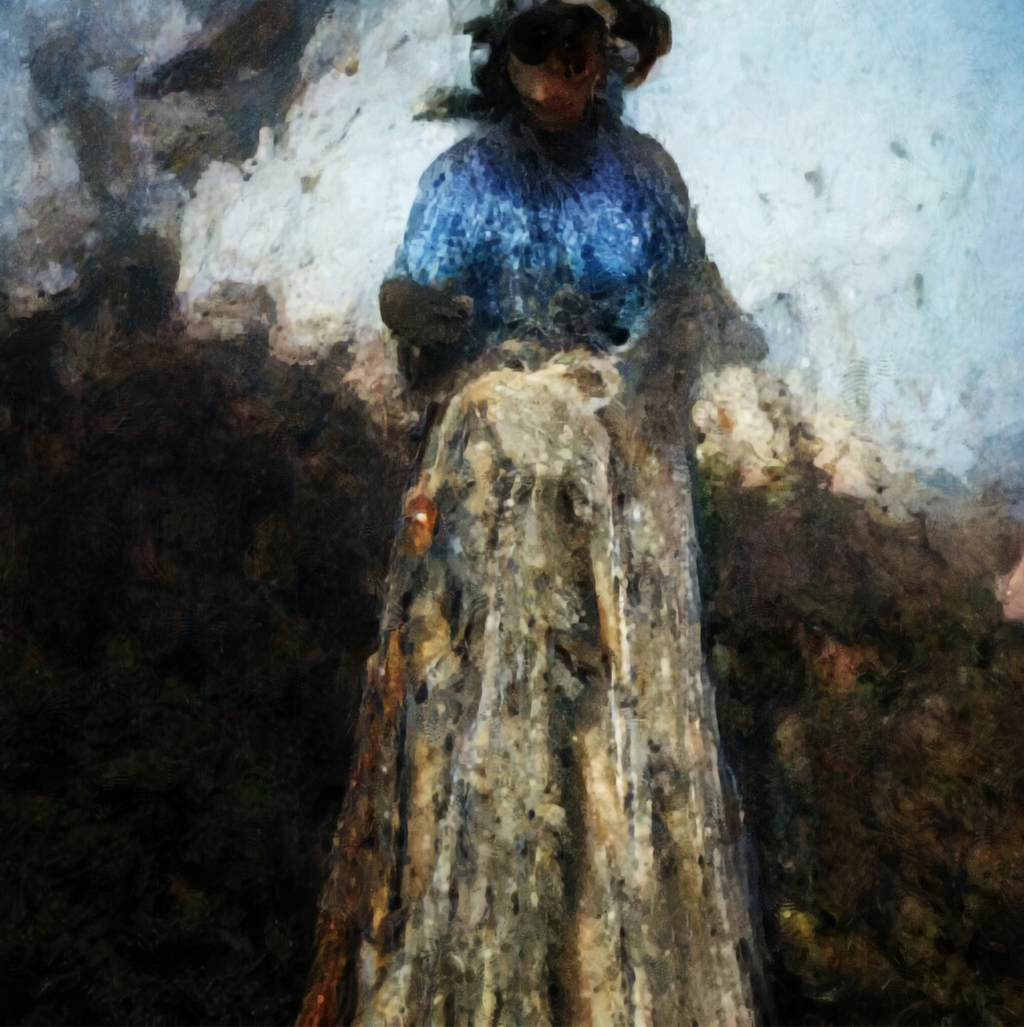
But what was it specifically about her art that I found and find so familiar? What in these works — so often characterized by smudgy and abstract composition, by a texture which emulates real brushstrokes, by settings devoid of identifiable detail but flush and swirling with mood, by foregrounds full of recognizably-human figures with amorphous and undefined features (a kind of warping where a face would be, etc.) — do I recognize, and which seem to recognize me?
If you read my recent interview with Silver, you’ll find the artist often mentioning her past: How she “Grew up in a very small town; graduating class of around 30. Same 30 from kindergarten to senior year, and [she] was… not well liked.” How she, solitary, dove into literature at a young age, forming a potent sense of taste uninfluenced by the metropolitan mindsets many of her contemporaries carry. Or how, having found AI much later in life, she sought to honor her history by including it: Silver would add old pictures of herself to her datasets. Her resultant artworks all contained literal pieces of her life. They have within them a bevy of Claire Silver’s own memories.
And from therein stems my conclusion: Silver’s artworks feel so familiar because they feel like memory itself. Not just my own memory, and not necessarily Silver’s either, but our collective memory. Hazy recollections, where bold and well-outlined central figures pop against blurred backgrounds, a girl in a room standing before the soft sienna glow of a Halogen bulb, and all the nostalgia we feel in hindsight.
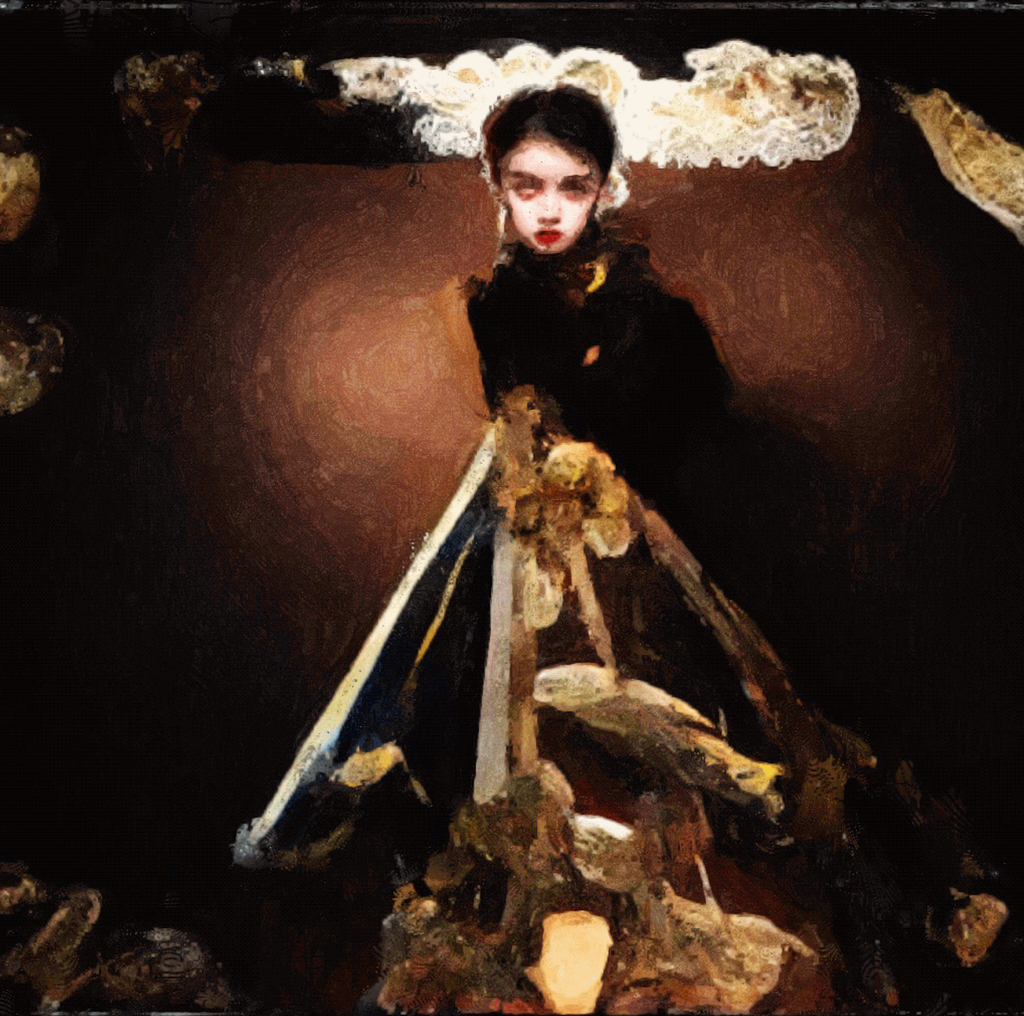
A memory of mine: My mother chopping onions in the kitchen on some weekday evening. There she stands, half-bent over the counter, the room warm and beige, my child-self cocooned in waves of safety and comfort that seem as strong today as they must have been then. Nevertheless, the scene is almost entirely sans detail; I don’t know what else occupied the counter, if anything, or what the weather was that day. What was she cooking, what did she wear, what kind of expression was on her face: Focus, frustration? The memory is powerful, the emotion palpable and transportative, but there’s an overall lack of specifics.
Now, take Silver’s work, c l a i r e (owned by Batsoupyum, and which Cozomo de Medici recently called one of 2022’s top 10 crypto artwork). Here’s what I’d like you to do: Look at c l a i r e for a moment, give it a long once over, and then scroll past it. Afterwards, I want you to scroll slowly back upwards to the paragraph thereafter, but don’t look at the photo again. Stop scrolling juuuuuust before c l a i r e’s bottom edge. Okay? Ready? Go!
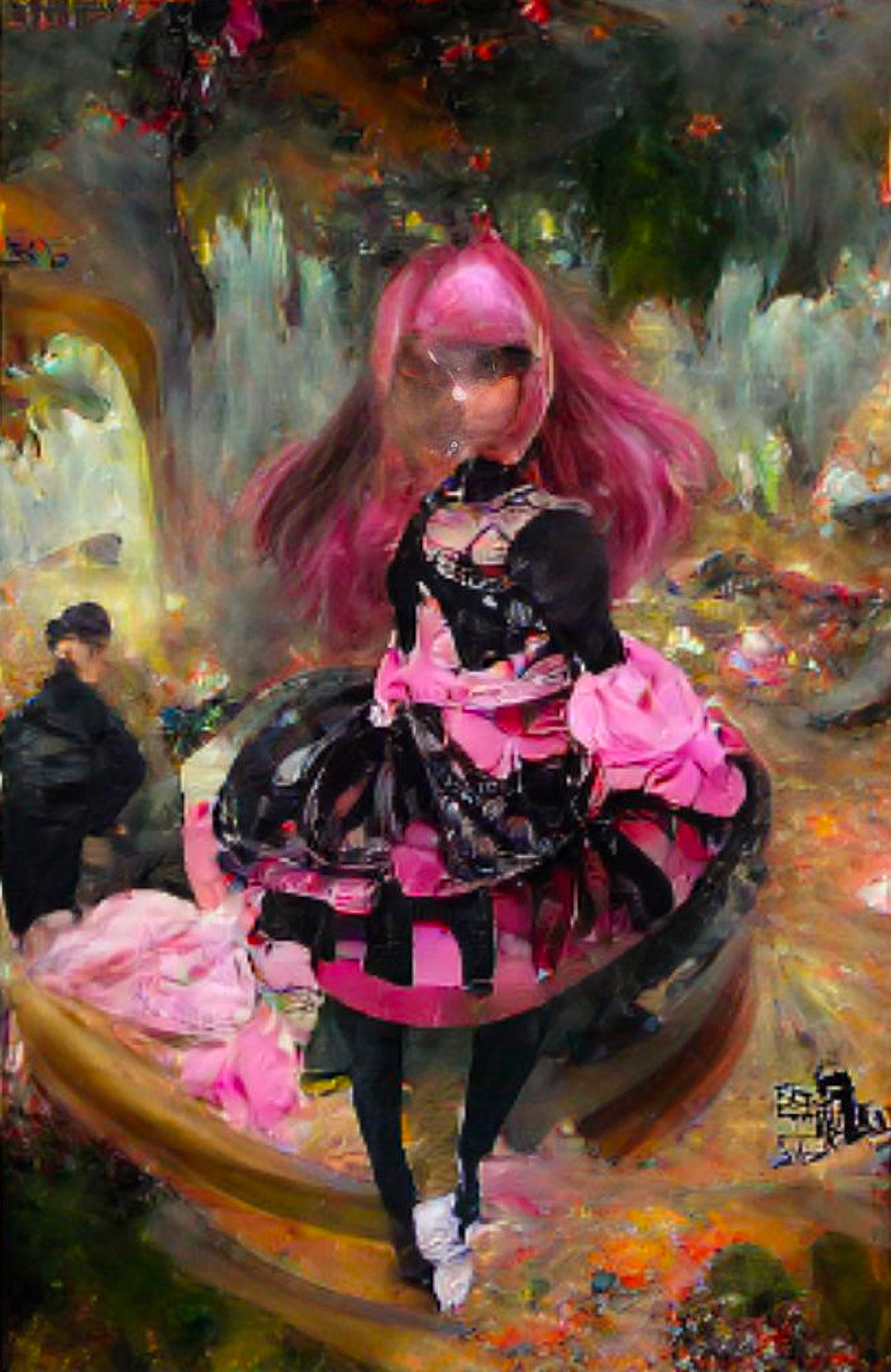
………….>>>>>> STOP SCROLLING HERE<<<<<<……………
Well done! Quite a piece right? So, tell me: What do you remember about the piece? Does the figure have a face? If so, what features are prevalent? Did you pick up on eye color? What are they wearing? Shoes? Stockings? Leg warmers? Where does this image take place, if anywhere? Anyone else in it? What is happening in the background?
Hard to remember, right?
Even so, you probably remember how it made you feel. The raw experience it provokes. If you’re like me, that feeling is with you even now, sitting on your shoulder like some furry-footed falcon.
Silver’s works in the style of c l a i r e conjure not just the aesthetics but the very experience of memory, with all its little inefficiencies, its predilection away from particularity and towards aura. The exact details of a memory are almost always nebulous, perhaps totally absent, though we can easily recollect the mood of the thing because it is the mood from whence memory draws its power, its very memorability.
But one of the reasons Silver so fascinates me is that there’s another side to her artistry, one which seems to contradict everything we’ve hitherto discussed: a bonkers and surrealist and highly-aestheticized glut of artwork that’s so dog-gone memorable, with details so peculiar, it could have conceivably come from a different artist altogether! These drastically unlike aesthetics, however, strike me as really two facets of the same idea. Two approaches to memory, both recognizable, and both deeply important to how we perceive the world in 2023. The one we’ve already spoken about is rather universal, but the other is uniquely and specifically of our time.
Part II: New Memories
Irony is so often the thing with Claire Silver. Like her interest in probing humanity, for example, which she does using technology few humans can even comprehend. Or how her insistence on anonymity resulted in her pink-haired avatar becoming one of the most recognizable faces in all of crypto art. AI artwork is itself ironic: The human has all the artistic urge, insight, and direction, and yet they do not themselves place even a single pixel down on the page.
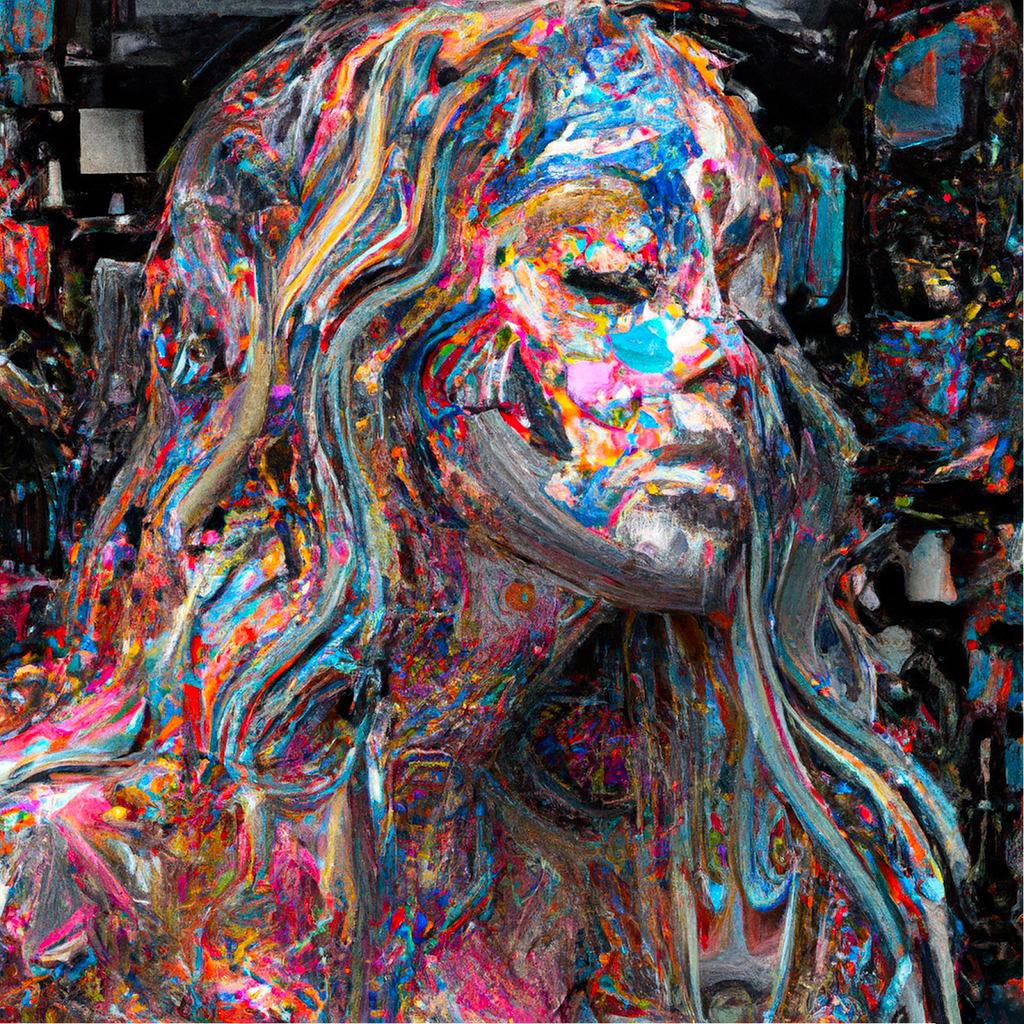
Memory in our day is ironic as well: It’s comprised not just of what we’ve experienced ourselves, but of all the content we’ve consumed, false memories which blend together — oftentimes inconspicuously — with our own.
Maybe we’ve all had this experience, or maybe it’s a quintessentially millennial thing, but you have a loose memory — of a place, conversation, situation — and as you try to parse through where exactly you were and what you were doing in this memory, you realize that you weren’t in it at all. You’d mistook some piece of creativity — a TV show, film, or video from Twitter — as a moment of your own. This happens to me often with movie quotes. This happens to me often with sweeping vistas of the American west.
These kinds of Content Memories (as I’ll call them) are an unavoidable part of existing in the Information Age, though they express themselves differently from real memory. In Content Memories, the trade-off between details and mood is reversed; details come to the forefront. I can remember an actor’s face, the reflection of light off their blue eyes, and the breed of that dog pissing on a fire hydrant there in the background, all with incredible specificity. I can remember tones of voice, morpheme for morpheme. The details of the memory are easily remembered, and, in turn, it’s the tone, the mood, the atmosphere which become harder to access, if they’re accessible at all.
This is a 21st-century phenomenon by nature. Before high-definition screens and crystal-clear imagery became ubiquitous, content was overtly unrealistic, lacking the color, complexity, and fluidity of actual existence. Over the last 20 years, however, technology has caught up. Our content is hyperrealistic today, mimicking in cadence, color, and composition the sensual experience of life itself.
If the first segment of Claire’s artistry was a sincere, or sincere-seeming, attempt at recreating the baseline experience of human memory, then this second segment captures our new, millennial kind of memory, where our lives are so interwoven with the content we experience that the subsequent memories are hard to detangle.
In Don Delillo’s 1985 novel, White Noise, (recently a movie) two characters “…drove twenty-two miles into the country around Farmington. There were meadows and apple orchards. White fences trailed through the rolling fields. Soon the signs started appearing. THE MOST PHOTOGRAPHED BARN IN AMERICA” is what they set out to see, a local tourist attraction of uncommon candor. People swarm outside the Barn with their “…tripods, telephoto lenses, filter kits.” One character remarks that “‘No one sees the barn.’” Another says, ‘“They are taking pictures of taking pictures.’”
And such is the case with Content Memory. We are not remembering things. We are remembering pictures of things. Manicured television recreations of things. A painstakingly-arranged version of life that someone somewhere has set-up, contrived, and communicated to us. Our perspective, our memory, and, hell, our whole world, are indelibly changed in the transfer.
Nobody is mistaking the bizarre, surrealist images in this second segment of Claire’s artwork — — seen most clearly within her collection AI Art is Not Art, but also in pieces like Renaissance, Renaissance, Renaissance and I N T E R N E T — for facsimiles of their own memory. But again, the majesty of Claire’s artwork is that it somehow manages the experience of memory as much as its aesthetics.
Let’s play our little game again: Look, scroll down, return slowly.
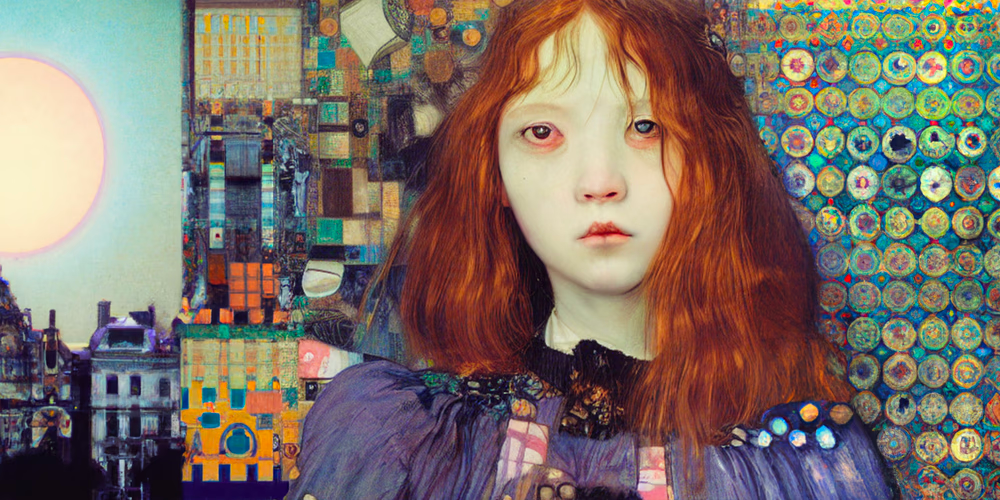
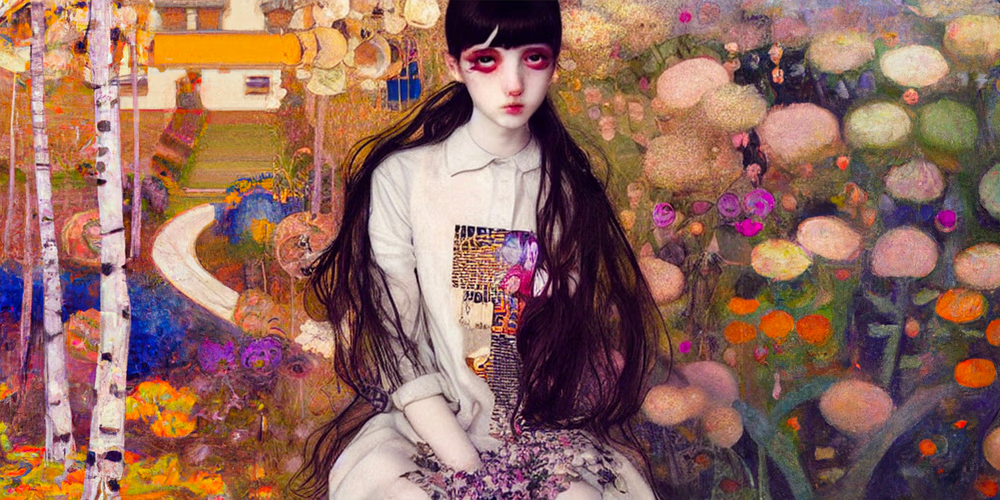
………….>>>>>> STOP SCROLLING HERE<<<<<<……………
Just like before, think critically about what you remember.
It’s my assumption that you, like I, will have an exponentially easier time remembering the specific details of such pieces. Hair color, eye placement, details which strike us as particularly odd and thus memorable. And it’s not that we don’t pick up on a tone here, but there’s so much more detail to muddy any tone in particular.
Silver has made the artifice of these works their most obvious aspect, influenced as they are by artistic movements like Pop Art, Anime and popular animation, and Chinese Wood Block Art, all of which:
- Centralize artifice
- Remain much more complete in our memory than their abstract brethren
- Prioritize visual idiosyncrasy over emotional heft.

Like taking pictures of pictures, the original emotional essence of the thing is diluted over and over by the highly-artificial filters we place over it. We know what we’ve seen but not what we’ve felt.
In a podcast I was listening to the other day, the host asked his guest to imagine a basketball game, knowing that the guest — like I — would imagine a game as seen on TV instead of one attended at an arena or participated in oneself. We experience, and thus understand, the world through the lens of secondary mediums: Screens that present things to us just-so, more reflections of a director’s vision than of reality. While this makes the memory of the thing that much sharper, we lack the temperature, the smell, the weight of air and soft hug of denim around our calves which, in an experience of our own, affixes an emotional atmosphere to the memory itself. For example, I know my high school girlfriend broke my heart, and God do I remember that feeling well; I can remember the picnic table outside my collegiate apartment where we had our last aching conversation. But unlike if this were a TV show or some very manicured situation that I’d experienced through a screen, I can’t remember exactly what we said, her face, how she sat, etc. Even so, the aura remains startlingly powerful.
Silver’s oeuvre captures both of the vast and strange directions our memory today faces. That both feel familiar to us reflects how we split our lives between them. Our conception of memory adheres to the terms of that divorce.
Part III: False Memories
“To start very generally: Camp is a certain mode of aestheticism. It is one way of seeing the world as an aesthetic phenomenon. That way, the way of Camp, is not in terms of beauty, but in terms of the degree of artifice, of stylization.”
Critic Susan Sontag wrote that in her seminal 1964 work, Notes on Camp. Doesn’t it seem prescient? Sontag didn’t herself yet know of a world that was experienced — and remembered! — significantly through a screen, but her work seems to have anticipated it nevertheless. Our world today is an aesthetic phenomenon. We work via screens, relax via screens, communicate via screens, and form memories based on what we’ve seen there, subsequently forming stylized senses of taste and perspective overwhelmingly influenced by UX design, the color of Tweet, fonts, lighting and various exposures, frame-rates, sweeping drone shots. How we view and remember the world is how the world becomes.
Perhaps Claire Silver’s work feels so strikingly of our moment because the artifice in her work is so obvious even in an age of already widespread artifice. These are artworks which are unmistakably artworks. They are an extension of the trend in crypto art where artifice is both exaggerated and unavoidable: Glitch, generative, and AI artwork are just a few examples.

Silver’s artwork acknowledges the dichotomy of a world that is split between its ever-increasing artifice and its ever-growing nostalgia for a naturalism we mostly see as bygone. “Today’s Camp taste,” Sontag wrote in 1964, “effaces nature, or else contradicts it outright. And the relation of Camp taste to the past is extremely sentimental.” We can’t avoid the fact that Silver creates artwork using the most modern, mechanical, and unnatural artmaking tool humans have hitherto invented. But we also can’t avoid the screeching sentimentalism of her artistry. We often find in her works a moodily-lit love of the past, where figures in epoch-ambiguous dress dance and twirl, cloaked in a fountain of color that, no matter how dark it’s portrayed, is always comforting. They are the blues and soft candelabra oranges of all our vaunted childhood recollections, or they are the alien forms of our wildest imaginations. Either way, they seem to have come from somewhere deep within us. We’re shocked at how they burst and twirl before us, products of another’s mind.
I want to end with something else I find remarkable in Claire Silver’s artwork, and that’s how uncritical it is. Silver’s version of memory is not someone in the shower many years later, chastising themselves for a social faux pas they committed in 2006. This is celebratory artwork, one which revels in the various kinds of memory we possess.
Camp, likewise, is all about celebration: Of artifice, aesthetics, memories, and humanity most of all. “Camp taste is a kind of love, love for human nature. It relishes, rather than judges, the little triumphs and awkward intensities of ‘character.’” Claire’s work always feels full of love for its subjects, often things that society-at-large has less-than-appreciative attitudes towards: loners, AI, powerful women, flyover towns, crypto art itself.
That Silver can pull all this oh-so-human love out of something as cold and impersonal as AI is striking and impressive. Also strange. But so so cool. Her AI works feel so welcoming not just because they draw out the minutiae of our internal worlds, but because they hug our humanity instead of questioning or denigrating it. “Here is our world as it really is,” Claire’s art seems to shout. “Not so scary, right? And best of all, you belong in it.”
Her work takes us in a warm blanket and asks, “Why be scared of the inevitable?” Embrace, embrace, embrace. Silver’s is art that embraces us as we have been, as we remember being, as we are now, as we believe we are now, as we will be and as we hope to be, but never with fear, never with foreboding, and never with scorn. Everything Silver touches feels exalted. Insides and outsides. That so many of us find ourselves so consistently touched and seen by her work should tell us magnitudes about the sensibility she offers to us with her art in the first place.